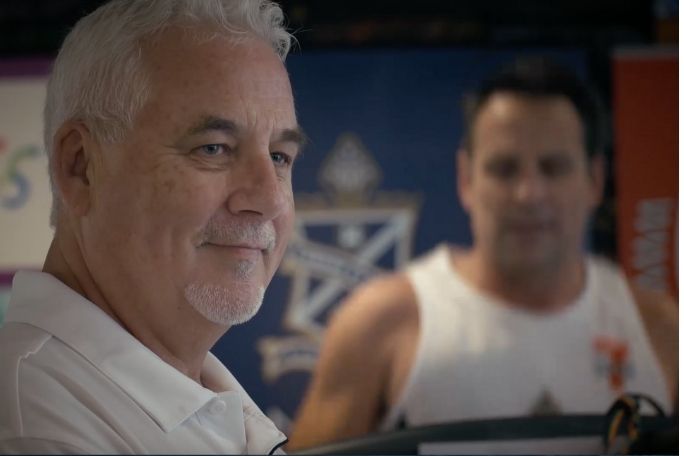Lesson summary
In this lesson, students apply what they have learned about rhetorical devices to change people’s minds about organ and tissue donation. In a Stand on the Line activity, students are hooked in to the reasons why a person may need or donate an organ, and have an opportunity to gauge their own perspective on the topic. Students view a short clip from the documentary film Dying to Live to be re-oriented to the issues surrounding organ and tissue donation in Australia. Students then plan and organise an awareness raising event in their school, applying what they know about using rhetoric to persuade at each step of the way.
Learning intentions:
Students will...
- understand rhetoric and key rhetorical devices
- understand how to use rhetoric to change minds
- understand more about organ and tissue donation, and the impact it can have on people’s lives
- be able to use their knowledge of rhetoric to convince others to support an awareness raising campaign (about organ and tissue donation)
Success criteria:
Students can...
- use rhetorical devices to change people's minds
- use rhetoric to appeal to others so that they can run an awareness raising event in their school
- use rhetoric to compel others to take action around the issue of organ and tissue donation
Lesson guides and printables
Curriculum links
Select your curriculum from the options below.
Lesson details
Curriculum mapping
Australian curriculum content descriptions:
Year 7 English:
- Plan, draft and publish imaginative, informative and persuasive texts, selecting aspects of subject matter and particular language, visual, and audio features to convey information and ideas (ACELY1725)
- Edit for meaning by removing repetition, refining ideas, reordering sentences and adding or substituting words for impact (ACELY1726)
Year 8 English:
- Create imaginative, informative and persuasive texts that raise issues, report events and advance opinions, using deliberate language and textual choices, and including digital elements as appropriate (ACELY1736)
- Experiment with text structures and language features to refine and clarify ideas to improve the effectiveness of students’ own texts (ACELY1810)
Syllabus outcomes: EN4-4B, EN4-2A, ENLS-5A, ENLS-7A, ENLS-9A
General capabilities: Literacy, Ethical understanding
Relevant parts of Year 7 achievement standards: Students understand how the selection of a variety of language features can influence an audience. They understand how to draw on personal knowledge, textual analysis and other sources to express or challenge a point of view. They create texts showing how language features and images from other texts can be combined for effect. Students create structured and coherent texts for a range of purposes and audiences.
Relevant parts of Year 8 achievement standards: Students understand how the selection of language features can be used for particular purposes and effects. They explain the effectiveness of language choices they make to influence the audience. Through combining ideas, images and language features from other texts, students show how ideas can be expressed in new ways. Students create texts for different purposes, selecting language to influence audience response.
Unit of work: Dying to Live – English – Years 7–10
Time required: 90+ mins
Level of teacher scaffolding: Medium – facilitate class discussion and social action planning
Resources required
- Student Worksheets – one copy per student
- Device capable of presenting a video to the class
- Agree/Disagree signs and Blu-Tack
- Rhetorical Devices Factsheet
- Project Planning Tool
Skills
- Communication
- Critical thinking
- Empathy
- Ethical understanding
Additional info
Dying To Live is a documentary feature film that examines organ and tissue donation and transplantation in Australia through seven different stories that highlight the social, physical and emotional effects of being on the organ donor waiting list. The film also aims to dispel myths about organ and tissue donation while encouraging family conversations so that family members are aware of their loved ones’ donation intentions. Find out how to screen or view the film here.


Welcome back!
Don't have an account yet?
Log in with:
Create your free Cool.org account.
Many of our resources are free, with an option to upgrade to Cool+ for premium content.
Already have an account?
Sign up with:
By signing up you accept Cool.org's Terms and Conditions(Opens in new tab) and Privacy Policy(Opens in new tab).